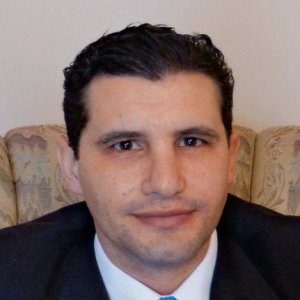Unconventional Artificial Lifting Systems
STORY INLINE POST
Mexico’s heavy oil fields were left largely unattended for years due to the lack of technology and the commercial viability of these projects when compared with fields such as Cantarell, offering light crude at a low production cost per barrel. Since the start of Cantarell’s decline, Mexico’s oil production has shifted towards heavier oil, making extraction more difficult. Therefore, PEMEX is implementing new technologies to increase heavy oil production in order to meet its overall production target. Artificial lift systems can be used for both primary and secondary recovery processes at low pressure reservoirs. Llegar EOR, the exclusive franchise of Vann Pumping Systems in Mexico, has brought in a new mechanical pumping method to participate in enhanced oil recovery projects, while increasing efficiency and lowering the costs of traditional artificial lift systems. “One of the key factors of our system is that it is not just a traditional mechanical pumping unit,” explains Mauricio Guerra, Project Manager of Vann Pumping Systems and Engineering Manager of Llegar EOR. “Companies in the mechanical pumping industry that offer improved artificial lift systems often focus on the cost-efficiency of the surface unit, while overlooking the downhole equipment. The Vann Pumping System includes improvements in both the surface unit and the downhole equipment.” While traditional mechanical pumping is done by connecting a string of rods from the pump jack to the downhole pump, the Vann Pumping System uses a cable to convey the up and down stroke of the downhole pump instead. At the same time, electronic controls operate a hydraulic system instead of mechanical pump jacks, eliminating all visible parts on the surface equipment. “We have patented the use of a cable as the mechanism to move the pump,” Guerra adds. “In other words, our system is automated, so it adapts to the well’s conditions once we start operations: it has the ability to adjust itself through time to optimize production. Mechanical options are constant, they cannot adapt to the circumstances at hand.”
As any new technology, the introduction of Vann Pumping System’s equipment started via economic and technical testing of its benefits as compared to other methods such as traditional pump jacks and other conventional artificial lift systems. “Our technology is patented, so we do not really have any direct competition,” Guerra claims. “Since there are no companies in Mexico that can offer a product and service like ours, PEMEX matched us against mechanical service providers and compared cost, quality, and operating capabilities. We secured our first contract by proving that we can improve on what other companies are doing with alternative mechanical systems.” The performance shown during the span of that contract yielded three extensions for Llegar EOR, which included more wells, a larger budget, and a time extension on the period in which PEMEX would require the company’s pumping systems and services. This evolved into a second contract with the company. The process, however, was not easy. “Being the only company in Mexico than can offer a product and service like this created both a competitive advantage and a barrier to entry,” Guerra reveals. “Since we are offering an innovative product in an industry that has never done things this way, there has been some resistance to change. Our job is to prove that our method exceeds the production and efficiency targets of other methods, but since there are no statistical records on mechanical pumping with a cable, the only way to do this was to test it in different fields nationwide.” While Guerra admits the process has taken longer than expected, the company continues to expand its operations with PEMEX to raise oil production from marginal or abandoned fields. At the same time, Llegar EOR keeps compiling results in its databases to speed up the testing process.
Llegar EOR first started proving its value at Burgos, where it applied for oil wells and had to adapt to survive. The firm’s intentions were to extract the condensate found in those wells or to remove the water to let the gas flow. “In wells such as these with a high gas-oil ratio, there is usually some gas interference or locking at the wellhead where the packing wears down just enough to permit fluids to leak past it and into the atmosphere,” Guerra says. “The rod in these systems is usually polished to minimize friction and wearing of the packaging. But the heat generated by the friction when there is no fluid at the wellhead may dry up the packing on the stuffing box, causing leaks into the atmosphere too. We proved very valuable for PEMEX’s Burgos team, since our system’s surface unit is always lubricated and completely enclosed, including the polished rod, with no visible moving parts. We allow no chance for leaks.”
Another chance for the company to showcase its technology came at a specific well in Altamira where oil had stopped flowing overnight. “PEMEX’s Poza RicaAltamira Administration found an opportunity for us,” says Guerra. “PEMEX knew that heavy investment would be required to increase production through artificial lift. The Altamira team allowed us to come and figure out if we could reactivate the flow within the budgetary limits.” In other words, PEMEX used the Vann Pumping System as an economic testing system to convert production projects into injection projects. “In wells where there is not enough information, our system can be used to test the financial feasibility of modifying them with minimal expenditure. Our technology does not require heavy equipment: it is easy to transport and install, avoiding changes to the downhole well schematics.” In this way, the Vann Pumping System can help to determine the average potential production of a well under this technology, while simultaneously testing it
“The most substantial advantage of this unconventional artificial lift system lies in the overall savings in EOR operations at low pressure reservoirs. Usually, in mechanical pumping you need energy to convey the up-down motion of the pump, since you are pushing and pulling the rod constantly,” compares Guerra. “In our case, we have a controlled descent using the weight of the cable and sinker bars. Gravity does the work. This spares us from having to use the additional weight of the rod string to reach more profound depths. We are not using energy to push towards the down stroke, which saves us around 60-75% of the total energy cost. Sensing devices are employed to control the action of the production unit, which enables the speed of the operation to be controlled to match the rate of fluid input into the wellbore at the casing perforations. This also saves energy by allowing the pump to operate in a timed cyclic mode, which upstrokes after there is a predetermined accumulation of production fluid in the pump barrel.” When talking about marginal wells, where the line drawn between profit and loss is really thin, this reduction in operating costs can determine the economic feasibility of a project. Marginal wells are normally operated on a clockbased method, which results in the up-down movement of mechanical pumping equipment causing a lot of stress on the surface unit. Once the unit has been turned off, the solid hydrocarbons still in the tubing precipitate into the pump, diminishing its lifetime. “We try to adjust to the well by matching the production figures you can get from other methods,” Guerra says. “We never shut the unit off, we maintain a continuous production process.”
Another way in which Llegar EOR reduces costs is by eliminating the pump jack. “The installation of a pump jack unit with long stroke capability at the well location takes one to two days,” describes Guerra. “With our system, we install a hydraulic cylinder using a small crane, which allows us to have the whole system in place in less than eight hours. It then takes around 10-15 minutes to remove the surface unit, you can move to the next location after only disconnecting the hydraulic cylinder.” This flexibility to move units around allows Llegar EOR to keep them safe from possible weather events, and saves time and money in installation and operating costs.
Vann Pumping System also limits failure by avoiding constant tension and compression forces in the rods in each of its 10hp, 30hp and 50hp units. “The cable in our system is always in tension, which increases pumping efficiency,” Guerra comments. “In addition, we can reduce labor, maintenance, surveillance, and operating costs. According to our numbers, 25% of mechanical pumping failures are related to the wearing of the tubing. Normally the unit pushes and pulls the rods up and down, creating stress so the couplings that connect rod to rod wear both the tubing and the rod. This stress causes failures within the operation that result in downtime since it takes a while to put the well back into operation.” In order to keep finetuning its product, Llegar EOR surveys each well in the fields where it works, and seeks to understand why other technologies, companies, and systems have failed there before. This research allows its team to integrate new tools downhole to adapt to each region’s particularities. Llegar EOR continues to look at places where its solution could provide added value, which has taken the company all the way to Chicontepec. “We started with a small contract four months ago, but that is now being expanded to four more years. Besides that, we have new contracts being drafted in Chicontepec and Burgos and we are in talks with PEMEX in the South Region. This shows that we are doing things the right way and that we offer a sufficiently versatile product to comply with our mission,” Guerra mentions. “Our goals and objectives are aligned with those of the oil industry at large: reduce lifting cost per barrel, reduce maintenance and workover costs, and enhance production.”





















